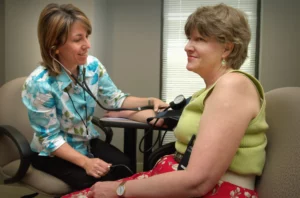Cholesterol – Do You Need to “Know Your Numbers” or “Control Your Risk”?
“I know I’m overdue for my ‘argue with you about a statin visit’ – I think it’s been a year already!” For several years running, we had been back and forth about my recommendation to start cholesterol medicine and my patient’s desire to avoid it. When he returned a few weeks later for an annual physical (which is what I preferred to call the visit), we’d review his risk factors and his lipid panel results. He was delighted to see his LDL cholesterol level had dropped ten points from last year, and he’d been cycling an hour a day, his endurance had improved and he’d had lost a few pounds. He’d never felt better, and his lipid numbers were all in the normal range! Why on earth did I still think he needed a statin?
Statin Medication for Primary Prevention?
Ever since the 2013 guideline update I’ve struggled as a doctor to communicate with patients about statin medication use for primary prevention. Primary prevention refers to people without a prior history of a heart attack or stroke[1]. This is where primary care doctors have the opportunity to help people the most – before they have known disease. Prior to 2013 we used a “treat to target” approach – we would identify a goal LDL (low density lipo-protein – often considered the “bad cholesterol”) and if lifestyle changes didn’t achieve it in short order, we’d prescribe a statin. It was easy for patients and doctors to understand and provided a clear goal for the patient to work towards when trying to improve their diet and lifestyles.

Photo by CDC
The 2013 update to the guidelines brought a more personalized approach to lipid management – and with it a lot of confusion. We now use lab values and patient characteristics such as age, sex, blood pressure, race[2], smoking status, presence of diabetes and hypertension to calculate a person’s 10-year risk of atherosclerotic cardiovascular disease (ASCVD). ASCVD is defined as risk of a non-fatal heart attack, death from cardiovascular disease, or stroke. For those whose 10-year risk tops 7.5% I will offer a statin to reduce their risk of heart attack and stroke. A personalized approach – sounds great, right?
“The Statin Zone”
Unfortunately the biggest contributor to one’s ASCVD risk is age – which means that many patients in their 60s and 70s will exceed that threshold despite normal blood pressure and sometimes a cholesterol panel that is all within the normal lab ranges! Even more frustrating, patients would often feel that their efforts to improve their health through lifestyle changes weren’t being recognized, since despite all their efforts I was still offering that new prescription – and nothing they could do would take them out of what my patient referred to as “the statin zone.”
So where does that leave us? I like to think that using the ASCVD risk calculator and estimating a person’s 10-year risk is the start of the conversation about preventing heart attacks and strokes – not the end of it.
[1] For individuals who have a history of cardiovascular disease the approach is quite different!
[2] The use of race (which is a social rather than a biological determinant of health) in clinical calculators in general and the ASCVD calculator is beyond the scope of this post.
